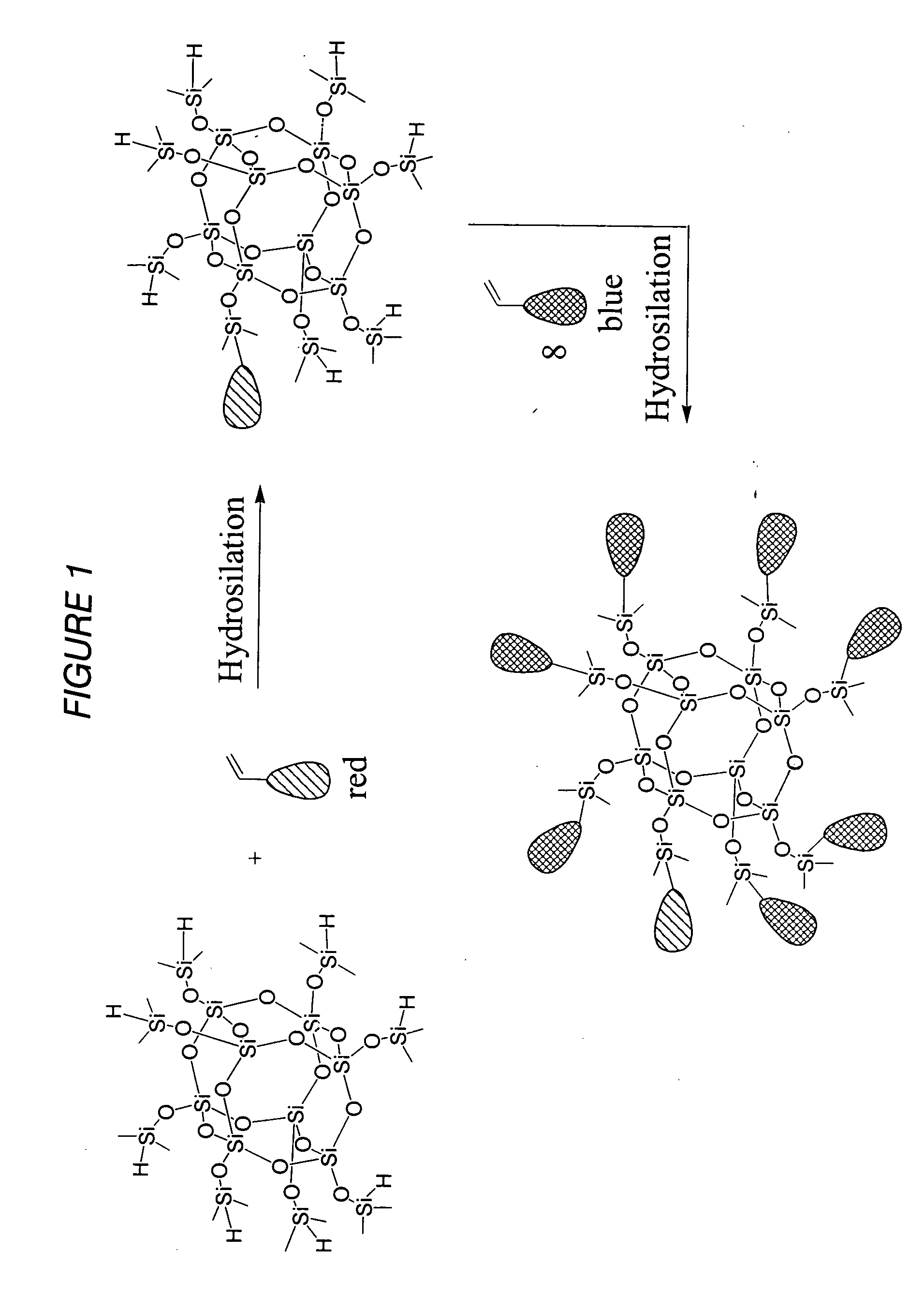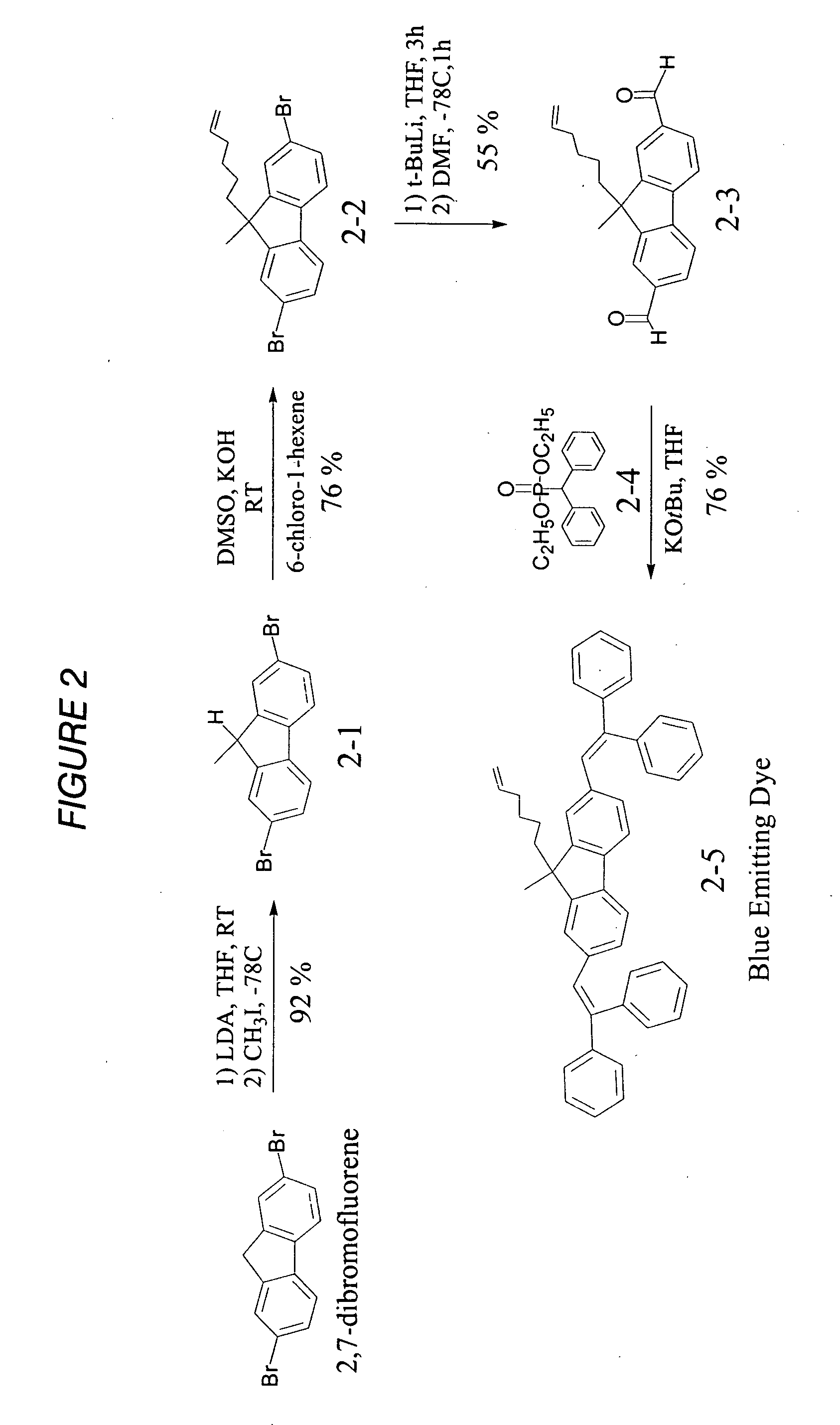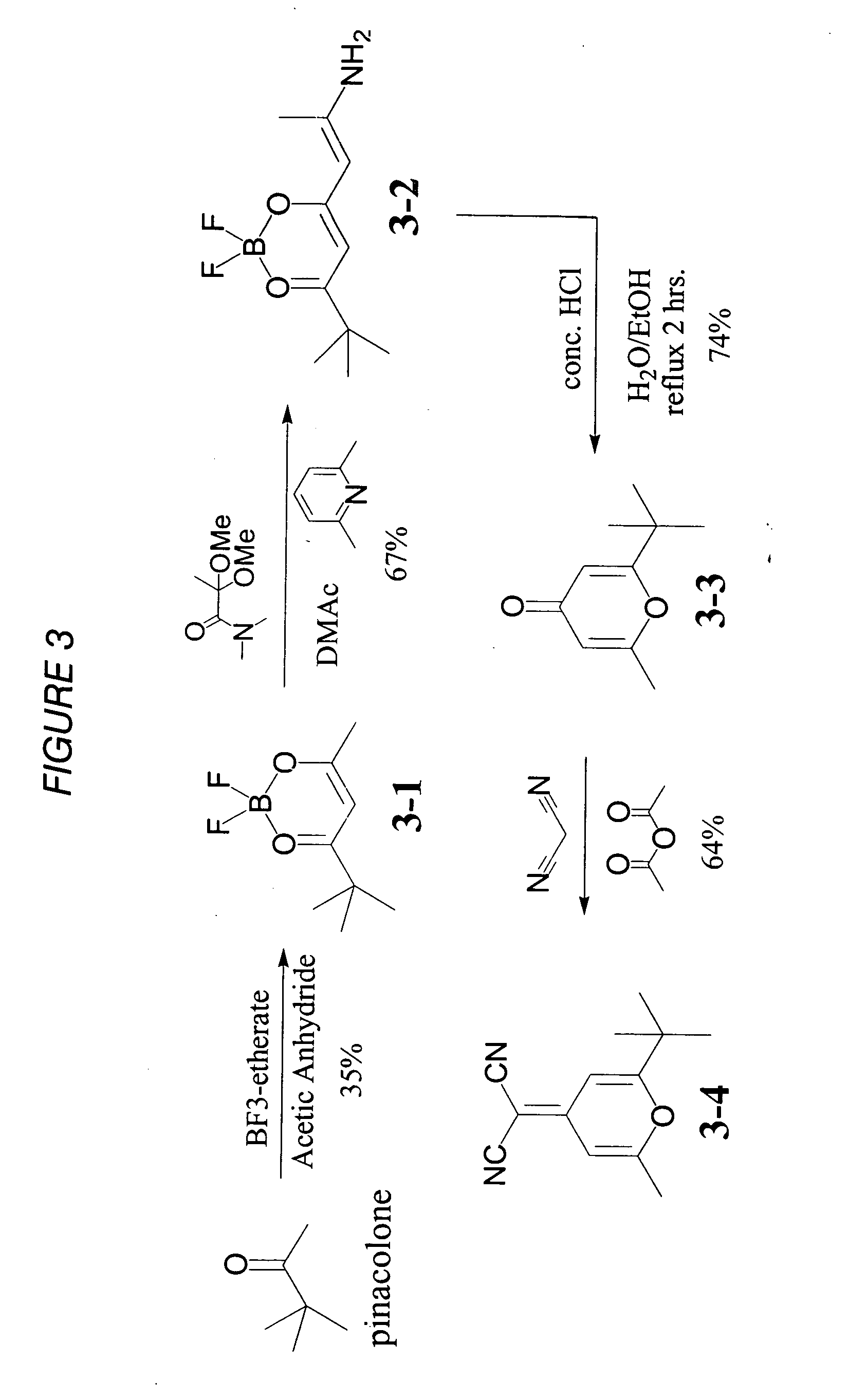Light-emitting nanoparticle compositions
a technology of nanoparticles and compositions, applied in the direction of discharge tubes/lamp details, natural mineral layered products, synthetic resin layered products, etc., can solve the problems of affecting the effect of light emission
- Summary
- Abstract
- Description
- Claims
- Application Information
AI Technical Summary
Problems solved by technology
Method used
Image
Examples
example 1
[0044]
[0045] Synthesis of 2-1: A clean, dry round bottom flask was charged with a stirbar, 2,7-dibromofluorene (25.25 g, 77.93 mmol), and freshly distilled THF (250 mL). The flask was fitted with a septum and argon was bubbled through the solution for 15 minutes. While maintaining positive argon pressure, the reaction mixture was cooled to −78 C in a dry ice / acetone bath for 15 minutes. Lithium Diisopropyl Amide (LDA) (2.0 M in THF, 44.81 mL, 89.62 mmol) was added to the reaction mixture by syringe. The flask was then removed from the cold bath until it warmed to room temperature (RT) then it was placed in the −78 C bath again. Once the reaction mixture was cooled back down to −78 C, excess CH3I (15 mL, 240 mmol) was added. The reaction mixture was stirred for 15 minutes then allowed to warm up to RT and remain at RT for 1 hour. The reaction mixture was then quenched by the addition of 2.5 mL acetic acid. After removing solvent by rotovap, the crude product was then purified by flas...
example 2
[0046]
[0047] Synthesis of 2-2: A clean, dry round bottom flask was charged with product (2-1) (10.0 g, 29.59 mmol) and dry DMSO (100 mL). The solution was degassed by bubbling argon through it for 15 minutes. KOH (10 g, 177.5 mmol) and 6-chloro-1-hexene (23.4 mL, 177.5 mmol) were added to the flask and the reaction was stirred for 30 minutes at room temperature. The crude product was extracted with hexane / water and the hexane layer was washed with water 4×, collected and concentrated in vacuo. The residue was filtered through a silica plug using hexane as the elluent and the product was recrystallized from hexanes to yield 8.99 g (72%) off white solid.
example 3
[0048]
[0049] Synthesis of 2-3: A round bottom flask was charged with product (2-2) (8.38 g, 19.95 mmol) and dry THF (100 mL). The solution was degassed by bubbling argon through it for 15 minutes. The reaction mixture was cooled to −78 C in a dry ice / acetone bath. Tert-butyllithium (1.7 M in pentane, 46.9 mL, 79.80 mmol) was added drop wise to reaction flask. The flask was stirred at −78 C for 30 minutes and then allowed to warm up to room temperature for 3 hours. The flask was then cooled back down to −78 C and dry DMF (12.3 mL, 159.62 mmol) was added. The flask was then allowed to warm up to room temperature for 1 hour. The reaction mixture was then poured into water and extracted with EtOAc. The EtOAc layer was washed 5× with acidic water. The EtOAc was evaporated in vacuo and the residue was chromatographed with 3:2 DCM:hexane to yield 3.50 g (55%) of the product as a yellow oil.
PUM
| Property | Measurement | Unit |
|---|---|---|
| wavelength | aaaaa | aaaaa |
| wavelength | aaaaa | aaaaa |
| brightness | aaaaa | aaaaa |
Abstract
Description
Claims
Application Information
 Login to View More
Login to View More - R&D
- Intellectual Property
- Life Sciences
- Materials
- Tech Scout
- Unparalleled Data Quality
- Higher Quality Content
- 60% Fewer Hallucinations
Browse by: Latest US Patents, China's latest patents, Technical Efficacy Thesaurus, Application Domain, Technology Topic, Popular Technical Reports.
© 2025 PatSnap. All rights reserved.Legal|Privacy policy|Modern Slavery Act Transparency Statement|Sitemap|About US| Contact US: help@patsnap.com



